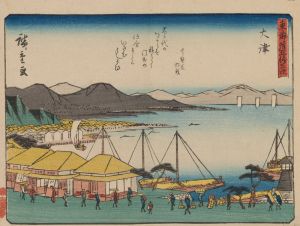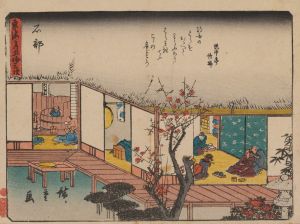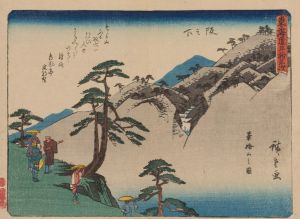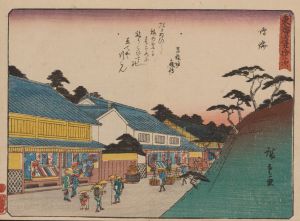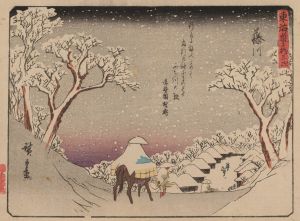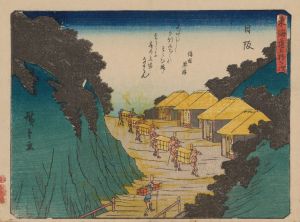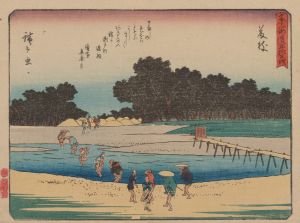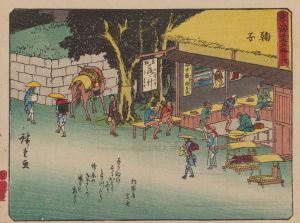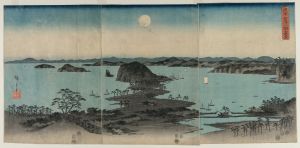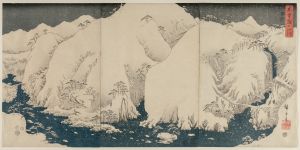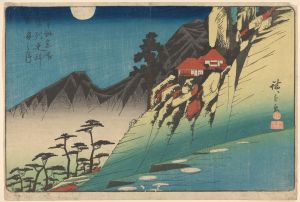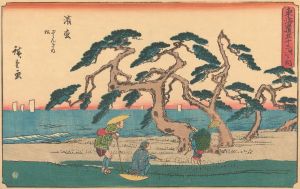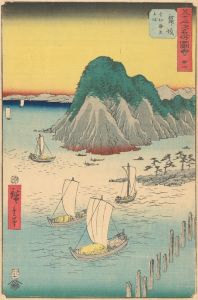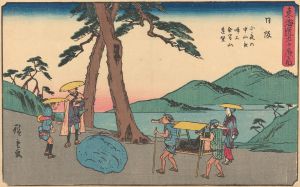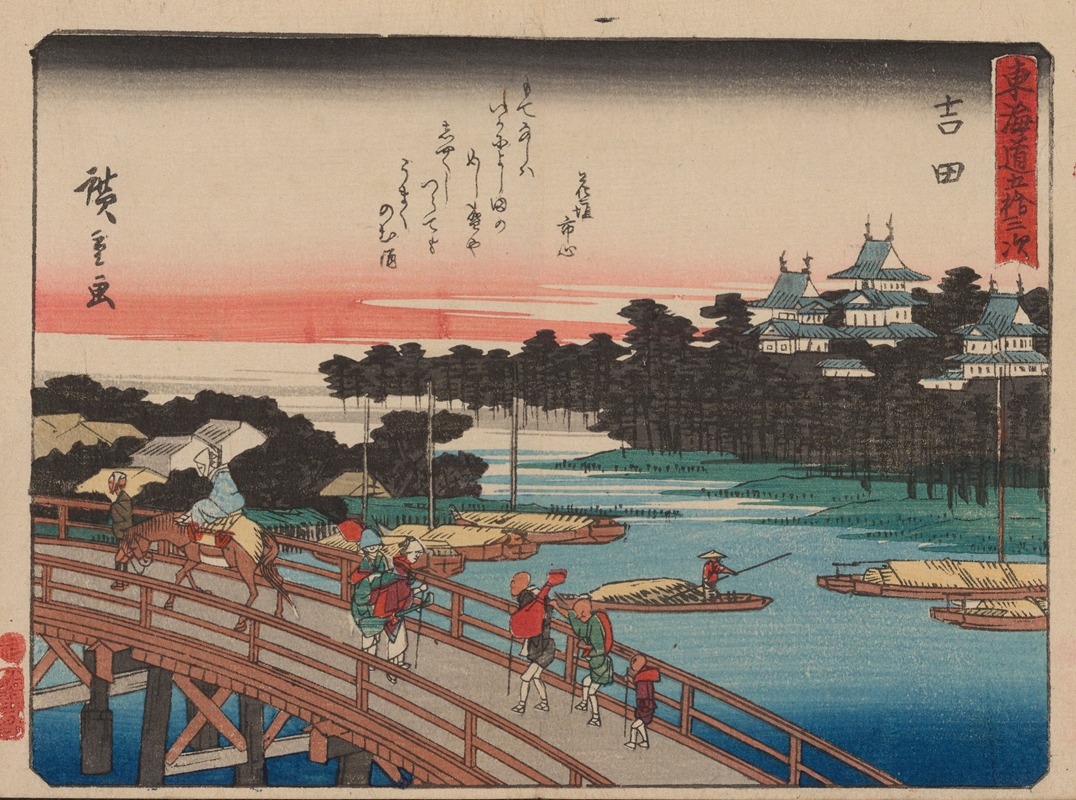
Tokaido gojusantsugi, Pl.35
A hand-painted replica of Andō Hiroshige’s masterpiece Tokaido gojusantsugi, Pl.35, meticulously crafted by professional artists to capture the true essence of the original. Each piece is created with museum-quality canvas and rare mineral pigments, carefully painted by experienced artists with delicate brushstrokes and rich, layered colors to perfectly recreate the texture of the original artwork. Unlike machine-printed reproductions, this hand-painted version brings the painting to life, infused with the artist’s emotions and skill in every stroke. Whether for personal collection or home decoration, it instantly elevates the artistic atmosphere of any space.
Andō Hiroshige, a renowned Japanese ukiyo-e artist of the Edo period, is celebrated for his series "The Fifty-three Stations of the Tōkaidō" (Tōkaidō Gojūsan-tsugi), which depicts the scenic views along the Tōkaidō road, the most important of the Five Routes of the Edo period in Japan. This road connected Edo (modern-day Tokyo) with Kyoto, the imperial capital. The series, created after Hiroshige's journey along the Tōkaidō in 1832, consists of 55 woodblock prints, including the starting point at Nihonbashi in Edo and the terminus at the Sanjō Bridge in Kyoto, along with the 53 stations in between.
Plate 35 of this series, often referred to as "Goyu" or "Goyu-juku," represents the 35th station on the Tōkaidō road. Goyu, located in present-day Toyokawa, Aichi Prefecture, was historically known for its inns and post town facilities that accommodated travelers. Hiroshige's depiction of Goyu is notable for its lively portrayal of the bustling activity typical of a post town.
In this print, Hiroshige captures the vibrant atmosphere of Goyu with a focus on the interactions between travelers and the local women, who were known for their aggressive solicitation of guests to stay at their inns. The scene is set along the main street of the post town, where travelers are seen being accosted by the inn proprietresses. This depiction is both humorous and dynamic, showcasing Hiroshige's keen observation of human behavior and his ability to convey the lively spirit of the Tōkaidō road.
Hiroshige's use of color and composition in this print is exemplary of his style, which often includes a harmonious blend of natural and human elements. The print features a balanced composition with figures in the foreground and architectural elements that lead the viewer's eye through the scene. The use of perspective and the arrangement of figures create a sense of depth and movement, drawing the viewer into the bustling life of the post town.
The "Goyu" print, like others in the series, reflects Hiroshige's interest in the daily life and culture of Edo-period Japan. His work provides valuable insights into the social and economic aspects of the time, as well as the natural beauty of the Japanese landscape. Hiroshige's Tōkaidō series was highly popular during his lifetime and continues to be celebrated for its artistic and historical significance.
Hiroshige's prints, including Plate 35, played a significant role in popularizing the ukiyo-e genre and influenced many Western artists, particularly during the Japonisme movement in the late 19th century. His ability to capture the essence of a scene with elegance and simplicity has left a lasting impact on the art world, making his works enduringly popular and widely studied.
Overall, "Tokaido gojusantsugi, Pl.35" by Andō Hiroshige is a masterful representation of the lively and bustling atmosphere of a post town along the historic Tōkaidō road, showcasing the artist's skill in capturing the vibrancy of Edo-period Japan.





